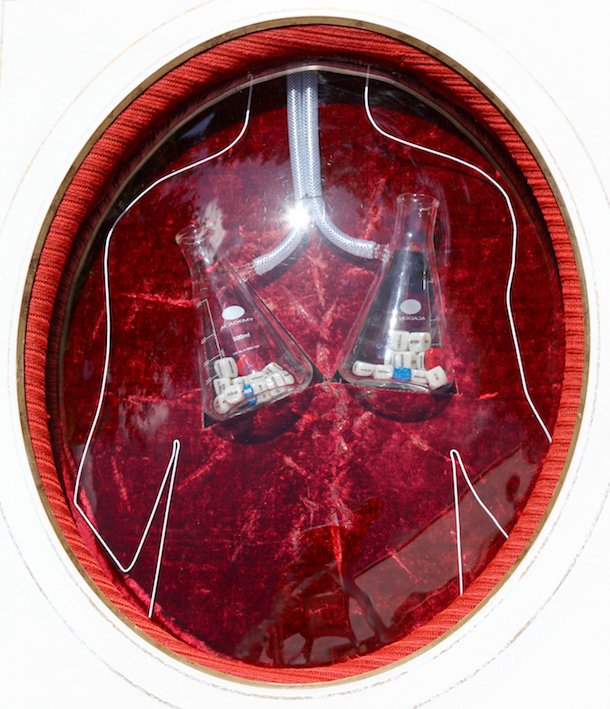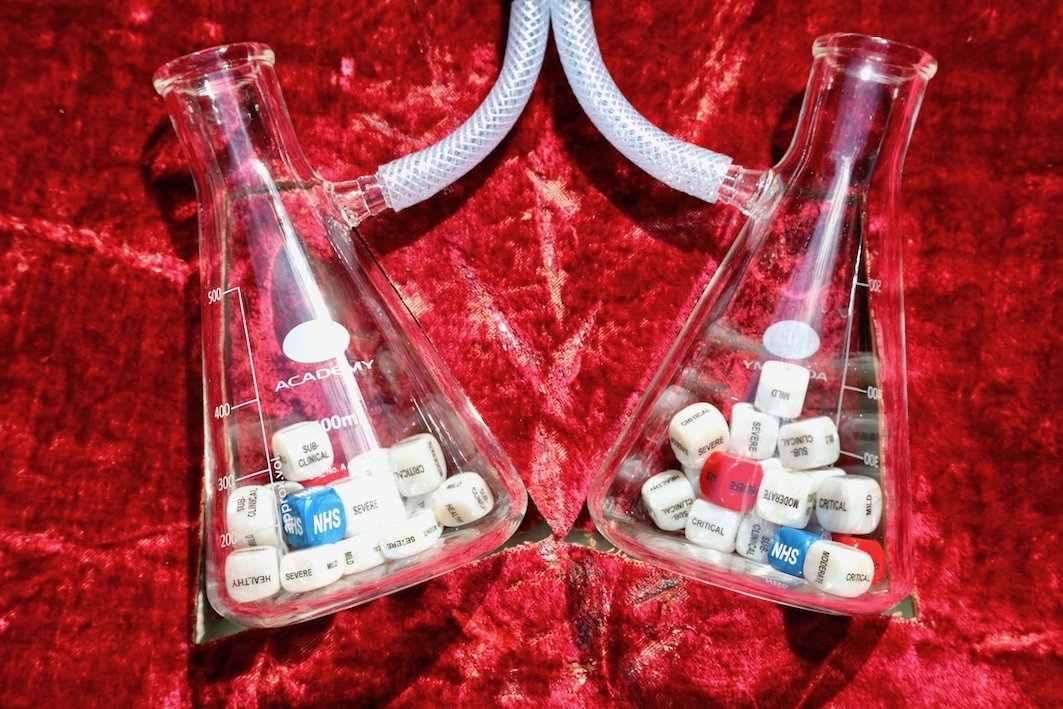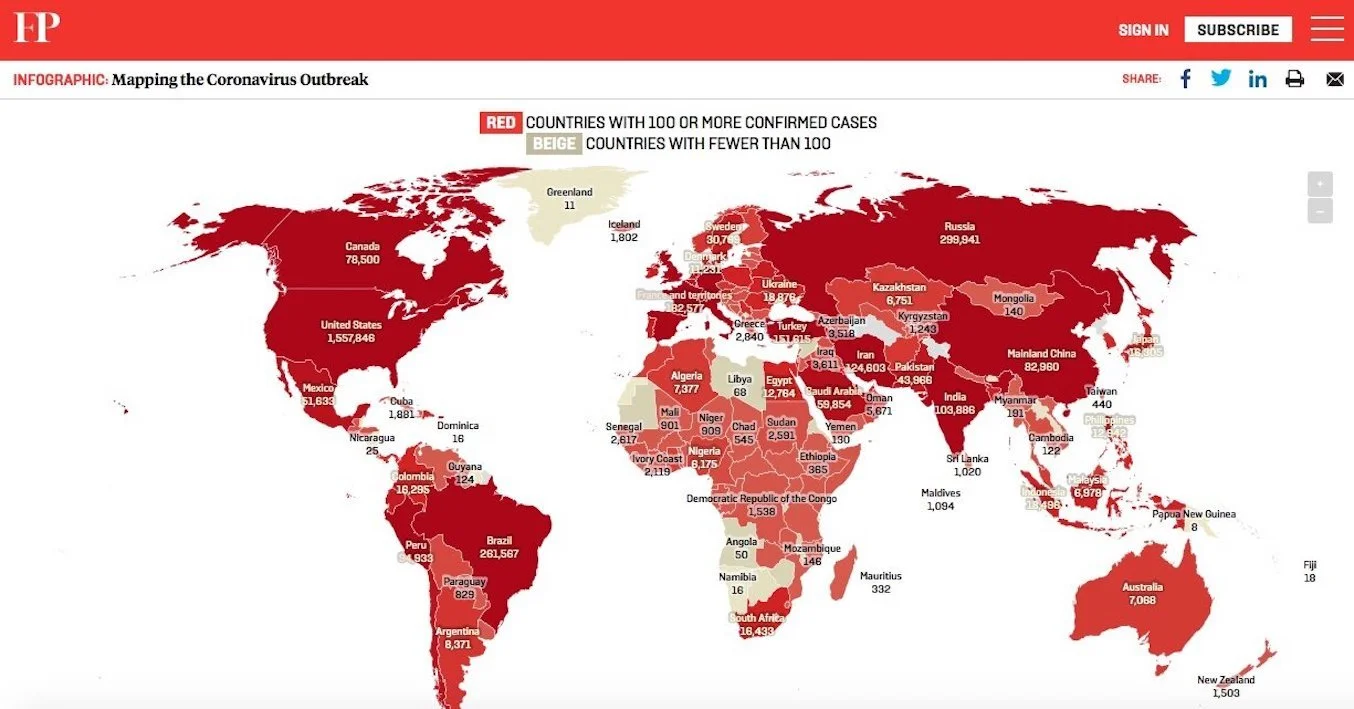ARTWORK DETAILS
David Aston
Quarantino (fear of the invisible red)
Mixed media (Victorian glass display dome, two scientific glass flasks, forty dice, plastic tube)
95 H x 85 W x 16 D CM
2020
“Quarantino (fear of the invisible red) depicts the isolation and fear of an invisible, but conspicuously red enemy felt by all during this time. A bubble of isolation containing the interplay between COVID-19 and its human hosts, the randomness associated with the odds of infection and the severity of it’s symptoms, and the efforts of the NHS and scientists working tirelessly for a solution to the global pandemic.”
FURTHER DETAILS
The dictionary describes ‘quarantine' as a ‘place or period of strict isolation imposed to prevent the spread of disease’. The word is derived from the 17th century Italian word ‘quarantino’, a 40-day period of quarantine first used by 14th century mediterranean sea ports to protect themselves from the spread of the black death.
The concept of ‘quarantino’ has become an important part of global public health policy ever since. Protecting the healthy from the threat of disease and helping to maintain social order during periods of plague. Similar forms of quarantino were used across the world in response to the COVID-19 2020 outbreak.
COVID-19 has been described by the media as an ‘invisible enemy’, an enemy which strikes at random and offers no guarantee of immunity even for the healthy or powerful. While COVID-19, like any virus, was certainly invisible, its colour was definitely red. Redness broadcast across every medium as a red growth spreading across the world map, as red dots on countries, cities and towns, and as red graphs counting the numerical impact of its presence.
ource: https://foreignpolicy.com/2020/03/04/mapping-coronavirus-outbreak-infographic/
The work Quarantino (fear of the invisible red), is a multi-media sculpture made during the COVID-19 global quarantine. A large antique glass bubble encircling a near life-sized human form with two glass lungs containing COVID air and forty multi-coloured dice.
The glass bubble represents the sealed environment of isolation during the months of quarantine. A physical glass layer protecting us from contact with an invisible enemy or contagion. A bubble providing the psychological comfort of our own homes, but a bubble that was regularly burst by media reports on the viruses progress and the dangers of the invisible red.
The bubble contains the silhouette of a figure with two glass scientific flasks. They are the human lungs and respiratory system most susceptible to the virus and are depicted in the medium of the science world focused on the cure.
There are forty dice because dice are a universal metaphor for randomness (one which is regularly used in the artists practice), and the number forty is the linguistic origins of quarantino. The dice are divided into three colours, white, red and blue. The white dice represent the global population with a certain degree of natural immunity to the virus. The red dice represent the invisible red and those parts of the population at higher risk of infection. Both white and red dice are engraved on all sides with the six categories used by health organisations to articulate levels of contamination within the population: healthy, sub-clinical (asymptomatic), mild, moderate, severe, critical. The Worldwide Health Organisation estimated that 6% of those infected would be severe and required hospitalisation, so three of the dice (6% of the forty) are red and two are blue representing the limited numbers of NHS key workers relative to the scale of the pandemic.
With the exception of the dice, all materials for the work were recycled from items found at home or studio. The framed bubble, a re-purposed victorian viewing case containing dried flowers waiting to become a new artwork, the human form made with coat hangers from the wardrobe which were temporarily out of use, and the glass flasks inherited from the maquette for an earlier sculpture.
The bubble’s history (circa 170 years) includes the the many global pandemics that have past since it was created in the mid 19th century. Its fragile burgundy velvet marked with age, the acts of destruction needed to re-purpose it into its new form, and now more symbolically the scars left on those who experienced the effects of the current virus, through contamination, isolation or fighting to manage and overcome it.
Quarantino (fear of the invisible red) depicts the isolation and fear of an invisible, but conspicuously red enemy felt by all during this time. A bubble of isolation containing the interplay between COVID-19 and its human hosts, the randomness associated with the odds of infection and the severity of it’s symptoms, and the efforts of the NHS and scientists working tirelessly for a solution to the global pandemic.




